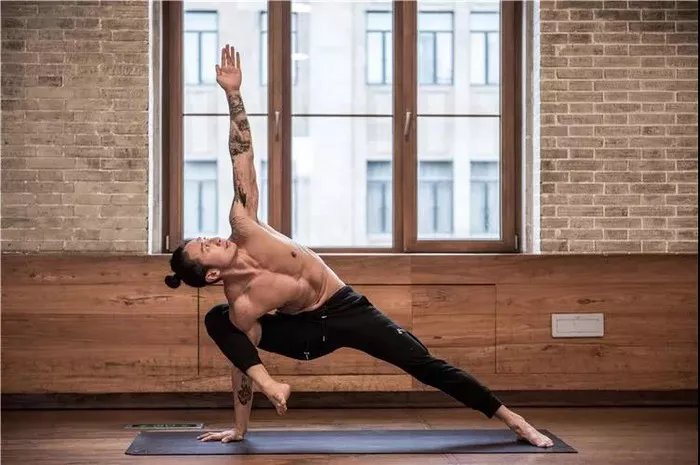Kriya Yoga is a profound and transformative practice that has been passed down through generations by great yogis and spiritual teachers. Unlike other forms of yoga that focus on physical postures (asanas) and breath control (pranayama), Kriya Yoga is a comprehensive spiritual discipline that integrates meditation, self-awareness, and inner awakening. But when it comes to mastering Kriya Yoga, a common question arises: How long does it take to learn Kriya Yoga?
This is a multifaceted question because Kriya Yoga is not just a technique or set of exercises to master. It’s a spiritual journey, a process of deepening one’s connection to the divine and awakening the dormant energies within. The path of Kriya Yoga is highly individual and varies from practitioner to practitioner. To answer the question of how long it takes to learn Kriya Yoga, several factors must be considered, including the approach to learning, the practitioner’s dedication, and the specific goals they wish to achieve.
Understanding Kriya Yoga
Before diving into the timeline for learning Kriya Yoga, it’s important to understand what Kriya Yoga is and what it involves.
Kriya Yoga is a set of advanced techniques designed to accelerate spiritual growth and help the practitioner achieve self-realization. The term “Kriya” translates to “action” or “deed,” and in the context of yoga, it refers to specific techniques that lead to higher states of consciousness. Kriya Yoga was made famous by the teachings of Paramahansa Yogananda, author of Autobiography of a Yogi, who described it as a scientific approach to spiritual awakening.
The practice includes a combination of meditation, breath control (pranayama), concentration, and devotion. The key technique of Kriya Yoga involves controlling the breath to regulate the energy flow in the body, particularly the prana (life force), which is believed to lead to the awakening of higher spiritual centers.
Key Components of Kriya Yoga
Kriya Yoga typically includes the following practices:
Pranayama (Breath Control): The central technique of Kriya Yoga involves specific breath control exercises that harmonize the body and mind, increase energy, and allow the practitioner to direct the flow of prana.
Meditation: Kriya Yoga incorporates various forms of meditation that help quiet the mind, achieve inner peace, and deepen the practitioner’s connection to their higher self or the divine.
Self-Awareness: Developing a deeper sense of self-awareness and spiritual discipline is crucial in Kriya Yoga. This involves practicing mindfulness, focusing on the present moment, and developing detachment from worldly distractions.
Chakra Awakening: The Kriya techniques also aim to activate and balance the chakras, or energy centers, in the body. This process helps in purifying the mind and body, eventually leading to spiritual enlightenment.
Guru-Disciple Relationship: In many traditional paths of Kriya Yoga, it is believed that the guidance of a realized teacher, or guru, is essential to the practice. The guru provides instructions, support, and spiritual wisdom to help the student along their path.
Factors That Affect How Long It Takes to Learn Kriya Yoga
Prior Experience in Yoga or Meditation:
One of the key factors that determine how long it takes to learn Kriya Yoga is your background in other forms of yoga or meditation. If you are already familiar with basic yoga asanas, pranayama, or meditation techniques, you may find it easier to integrate the Kriya techniques into your routine.
Beginner Practitioner: For those who are new to yoga or meditation, it may take longer to grasp the foundational concepts and techniques. In this case, it’s advisable to first build a strong foundation in physical yoga and basic meditation practices before diving into the more advanced practices of Kriya Yoga.
Experienced Practitioner: If you already have experience with meditation, mindfulness, or pranayama, you might find it easier to adapt to the practices of Kriya Yoga. The techniques themselves might take less time to learn, but the real challenge lies in the depth of spiritual understanding and inner transformation that takes place.
Intensity and Consistency of Practice:
The pace at which you learn Kriya Yoga largely depends on how dedicated and consistent you are in your practice. Kriya Yoga requires a significant commitment of time and energy, and the benefits will unfold gradually over time.
Daily Practice: If you practice Kriya Yoga consistently on a daily basis, you can expect to experience gradual improvements. Most practitioners recommend at least 30-60 minutes of practice per day to start seeing tangible results. With this kind of consistent dedication, you may begin to experience a deeper sense of peace, clarity, and connection after several months.
Commitment to Regularity: The key to progressing in Kriya Yoga is regularity. Even if you cannot dedicate long hours to practice, committing to a short yet consistent practice will bring results. It is far more effective to practice regularly for 20-30 minutes than to practice intensely once in a while.
Guidance from a Teacher or Guru:
While it is possible to learn Kriya Yoga through self-study, having a teacher or guru is highly recommended. A teacher can provide personalized guidance, help you avoid mistakes, and offer the spiritual insight that accelerates your learning process.
Traditional Approach: In traditional Kriya Yoga, a guru plays an integral role in your progress. A guru can transmit the techniques to the student in a more direct and experiential way. However, finding a qualified teacher can be challenging, especially in modern times. It may require seeking out a well-regarded yoga center or teacher who is authorized to teach Kriya Yoga.
Online Resources: For those who do not have access to an in-person teacher, there are online resources available to learn the techniques of Kriya Yoga. However, a self-guided practice may take longer and require more discipline to master.
Individual Spiritual Progress:
Kriya Yoga is not merely about mastering a set of techniques; it’s also about spiritual growth. The time it takes to achieve mastery in Kriya Yoga depends on your level of spiritual awareness, mental clarity, and the degree of personal transformation you undergo through the practice.
Self-Realization: Kriya Yoga is ultimately a path to self-realization, and it is important to understand that this is a lifelong process. The full mastery of Kriya Yoga is a gradual unfolding of spiritual awakening, and it can take many years or even lifetimes. However, even within the span of a few months, you may begin to experience shifts in your consciousness and profound inner changes.
Physical Health and Flexibility:
Kriya Yoga also involves breath control and postures that affect the body. While the physical aspect of Kriya Yoga is not as intensive as Hatha Yoga or Ashtanga Yoga, the health and flexibility of your body still play a role in the process.
Physical Readiness: For people with limited flexibility or chronic physical conditions, it may take more time to integrate some of the physical postures and breathing techniques associated with Kriya Yoga. However, it’s essential to remember that Kriya Yoga can be adapted to suit individual physical abilities, and it’s possible to benefit from the practice even if one isn’t highly flexible.
How Long Does It Take to Learn Kriya Yoga?
Now that we’ve explored the various factors involved, it’s time to address the main question: How long does it take to learn Kriya Yoga?
Initial Learning Phase (1-6 Months): For most practitioners, it takes about 1 to 6 months of consistent practice to become familiar with the basic Kriya Yoga techniques. During this phase, you will learn the core breathing techniques, basic meditation practices, and principles of concentration. Some individuals may start feeling a sense of calm and clarity relatively quickly, while others may need more time to adapt.
Deepening Your Practice (6-12 Months): After the initial learning phase, you will likely enter a stage of deepening your practice. At this point, your understanding of the techniques becomes more intuitive, and you may begin to experience deeper meditative states. The benefits of Kriya Yoga, such as enhanced mental clarity, emotional stability, and physical vitality, will become more apparent.
Mastery and Spiritual Growth (1 Year and Beyond): Mastery in Kriya Yoga is not necessarily defined by a specific timeline but by a continued, sustained commitment to personal growth. While you can achieve significant progress within 1 to 2 years, the true essence of Kriya Yoga is a lifelong practice. Achieving complete self-realization through Kriya Yoga is a gradual, unfolding process that may take many years.
Conclusion
Learning Kriya Yoga is not about reaching a destination but about embarking on a transformative journey toward self-awareness and spiritual enlightenment. The amount of time it takes to learn Kriya Yoga varies for each practitioner and depends on factors such as prior experience, commitment, guidance, and individual spiritual progress. Whether you are a beginner or an experienced practitioner, the key to success in Kriya Yoga is consistency, patience, and a deep connection to the spiritual path.
Remember, Kriya Yoga is not a race. It is a sacred practice that requires dedication and devotion. As you move along the path of Kriya Yoga, you will undoubtedly experience profound shifts in your consciousness, and the process itself will become a rewarding and lifelong journey.
Related Topics:




















